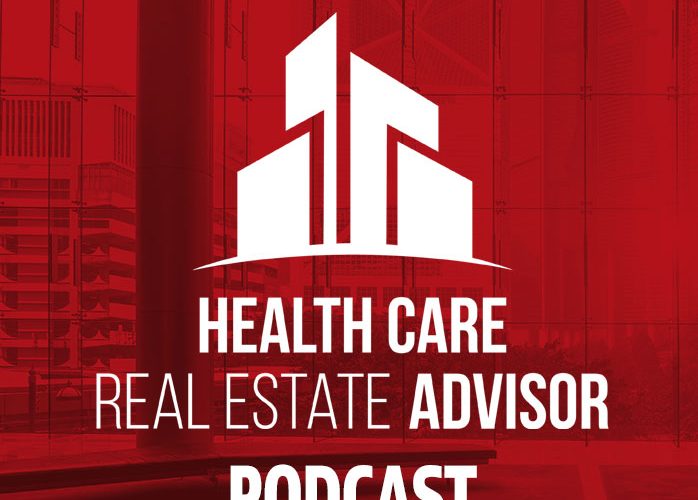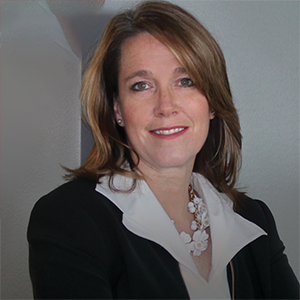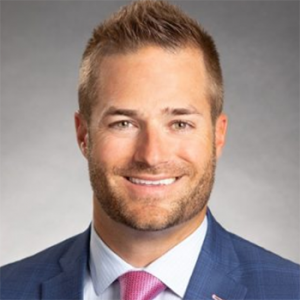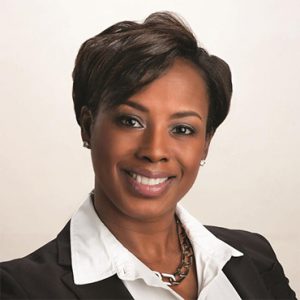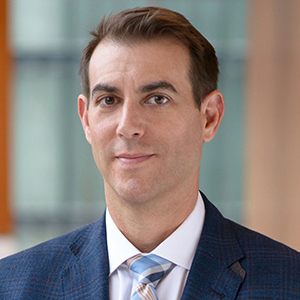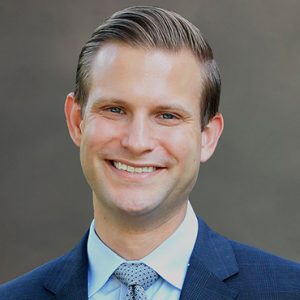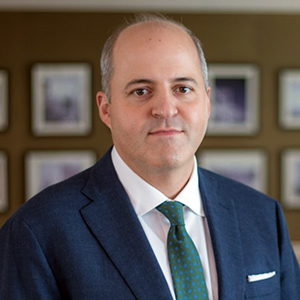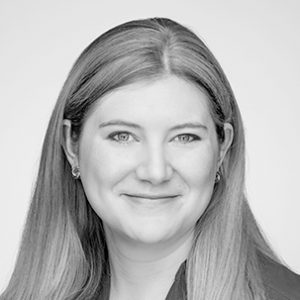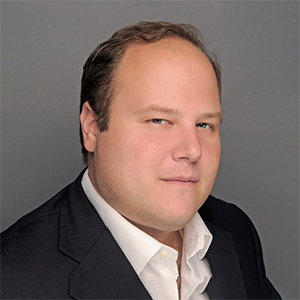Leveraging Opportunity Zones and Other Health Care Financing Tools with Jerimi Ullom and Joel Swider (Webinar)
Leveraging Opportunity Zones and Other Health Care Financing Tools with Jerimi Ullom and Joel Swider (Webinar)
Do you have a hospital development project that you would love to get done but just can’t seem to find the money? Wondering if your health system can benefit from the Opportunity Zones program? Join a health care finance attorney and a health care real estate attorney to hear about some unique and innovative ways to get your project funded.
.
Podcast Participants
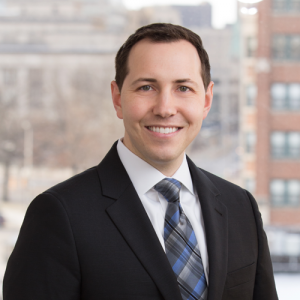
Joel Swider
Attorney with Hall Render

Jerimi Ullom
Attorney with Hall Render
Joel Swider: Welcome to the Health Care Real Estate Advisor Podcast. I’m Joel Swider, a healthcare real estate attorney with Hall Render, and for today’s episode we’re going to listen in on a webinar put on by my colleague Jerimi Ullom and I, which aired in September 2019, on Opportunity Zones and other healthcare financing tools.
Jerimi Ullom: Thanks Joel, we want to first of all today thank the Indiana, Michigan and Ohio Hospital Associations for having us, and we look forward to talking with everyone.
Joel Swider: So there’s been a lot of buzz about so-called qualified Opportunity Zones, but many of the hospitals that we work with haven’t focused a lot of attention on how they can benefit from this program, at least not to date. So in today’s webinar we’re going to answer at a high level three questions that frequently arise in the healthcare context when it comes to Opportunity Zones and the financing of hospital projects more generally.
Joel Swider: First we’ll look at what are opportunities zones, how do they work, and how can a both for-profit and nonprofit providers benefit? Second I think we’re going to find that the Opportunity Zone program has a relatively narrow fact set where it can be best utilized as a financing tool. So we’re also going to look at what other tools and incentives are available to hospitals to fund new development projects and to drive complimentary development within their markets.
Joel Swider: Finally, we’ll look at some concrete action items surrounding the next steps for hospitals who are looking at how to get their projects off the ground. Today’s session is designed as kind of a lunch and learn. We should go about 30 minutes, but feel free to type in any questions in the chat box or email us offline we’re happy to make ourselves available to answer any more in the leads questions that you may have.
Joel Swider: So what are Opportunity Zones? Opportunity Zones were conceived by the Tax Cuts and Jobs Act of 2017 the TCJA. They were designed as a way to spur investment in distressed communities by providing tax incentives for taxpayers who invest capital gains in certain geographic regions. As authorized under the TCJA, state governors were the ones who originally designated these zones, over 8,700 of them and the IRS then later approved those. They’re in all 50 states, the District of Columbia as well as five US territories, and this slide shows just an overview of where the Opportunity Zones can be found.
Joel Swider: At least this is a view of the continental US and there is an official government map, which we have a link to that on our website where you can zoom in, there’s third party maps as well. You can zoom in and find the area where your hospital or health system is located. And you can tell just from looking at this map at a high level that there are a lot of zones located in and around large cities, but they’re also in a lot of rural areas, especially if you look out West. So because it’s up to state governors to designate these zones, the state had some latitude as to where they’re located. So you might be interested to find whether you’re in one or near one.
Joel Swider: So how do Opportunity Zones work? So I’m going to go through this slide and the next at kind of a high level, and I’ve used some numbers in here just as an example, the dates as well, just as an example, so that you can see how this might work in practice. But I’ll go through this just briefly so that you can see whether or not you have a situation that might actually fit into the Opportunity Zone program or not.
Joel Swider: So to start with, you’ll have the sale of tangible property and a gain that’s been realized from that sale. So that’s work I’m calling that investment number one because that’s from some old investment. Now some hospitals buy and sell property more frequently than others. And we’ll get into how you might partner with a developer or other capital partner who might have more gains that they can deploy. So yeah, these dates here other than the timeframes are just for example purposes. But one date that’s important is within 180 days of the sale of that initial property, you must invest that gain into a qualified Opportunity Fund. So that could be all or a portion of that original gain. And I’m calling that investment number two.
Joel Swider: So that’s a separate investment and you’ll see in a minute that it’s treated slightly differently. Within two and a half years of that initial investment, investment number two, the Opportunity Fund has to purchase Opportunity Zone property and that includes real estate businesses, business assets, etc. And they must improve it by at least the value of the purchase price. So this fund is essentially a vehicle, an investment vehicle, it could be a partnership, a multi-member LLC tax as a partnership or it could be a corporation. But importantly it has to invest at least 90% of its holdings in one or more Opportunity Zones.
Joel Swider: So now we’ve got the gains from the sale of our initial property, invested it into the Opportunity Fund, we’ve put that money to work and then after five years in the fund, you will get a 10% increase in basis on the initial gain. So going back to that initial amount that you invested from the first gain, you will get a basis step up of 10% essentially that amount is the amount the taxable gain goes down by 10%. Then if you hold that investment for another two years, in year seven you will get an additional 5% increase in basis or another step up on that gain from the initial investment, investment number one.
Joel Swider: Again, there’s no gain recognized either in year five or year seven, you’re still continuing to defer those gains. Then in 12.31.2026 that is a hard date. There is a mandatory deferred gain recognition on that original capital gain from investment number one. So that and so because of the timeframes here, I’ll mention, if you want to get the full 15% basis step up on that deferred gain, you need to really invest by 12.31.2019. Now you can still invest later and qualify for the 10% basis step up if you hold it for five years. But obviously you could no longer hold it for seven years because that 12.31.2026 drop dead date.
Joel Swider: Then as to investment two, so going back to our Opportunity Zone investment, if you hold that investment for 10 years total, then any gain from that sale of a second investment is completely erased. You get a basis step up to fair market value. So as you’ll see, I think if you can fit into it, it’s a great program, and as I kind of talked about on the previous slides you can get temporary deferral of gains, you get a step up in basis as to those gains, and you can get a permanent exclusion on taxable gains on the second investment. So it can be a good program if you qualify.
Joel Swider: Now what happens if you’re tax exempt, you say, “Look, I, don’t have any taxable gains. I am charitable, I’m nonprofit and tax exempt.” Well how can this work for you? And so I think there’s still are some ways that you could leverage the Opportunity Zone program, one of which is, especially for hospitals that are located in the Opportunity Zone or near the border. And there’s some specific rules that the IRS put out earlier this year with respect to those types of properties that span, that are partially in the zone, partially not, which we can again talk about kind of offline if you have questions about that.
Joel Swider: But if you’re on or near the zone, you could partner with a capital or a development partner who is able to take advantage of the tax benefits and that could result in a lower cost of capital to you as a provider for the real estate or for other development projects.
Joel Swider: Another way that we’ve seen this work is that hospitals can attract for-profit investors to improve social determinants of health in the community. So we’ve seen a lot of focus in recent years with our clients and other hospitals where they’re looking at non traditional healthcare investments it’s really within their charitable purpose, but what they’re doing is they’re investing in affordable housing, they’re putting grocery stores into sort of a food desert area, and they’re making nontraditional healthcare investments that really help improve the population health in the community as a whole. And by so doing achieve their mission. So this is another way, and we’ll get to an example of this in just a second of how you might partner with a for-profit to provide some of those services.
Joel Swider: Another thing to think about when it comes to a tax exempt provider is that a rising tide floats all boats. So what kinds of investments could you make that are within your charitable purpose within that community where the longterm value might actually end up not as a direct result but indirectly helping others who would be willing to invest in that community. So for example, a hospital could pledge community improvements in order to attract for-profit investors to the community, thereby improving social determinants and population health more broadly.
Joel Swider: So just we have three quick examples here kind of straightening what this can look like and I’ve got links to the … If you want to find out more about each of these, I’ve not used the provider’s names but you can look them up. There’s an academic medical center on the East Coast, which collaborated with a for-profit pharmacy operator to open a new pharmacy and wellness store near the hospital’s campus.
Joel Swider: The store offers a variety of health services, daily living products and health food options, and it also provides a health clinic that’s staffed by nurse practitioners. So this is again in coordination with the hospital. And so this actually came out a couple of years before the Opportunity Zone program, but when we were looking at this we thought, wow, could we recreate this today and take advantage of the Opportunity Zone program? I think you certainly could.
Joel Swider: And so for this example the for-profit pharmacy operator could defer, reduce their capital gains by investing in the zone and the academic medical center could attract additional capital and development partners, which they have that are able to utilize the program. So again, kind of a win-win for both parties.
Joel Swider: Another example here, this is in the Midwest, a large nonprofit Midwest health system partnered with a community development financial institution to help mobilize loan and grant funding to revitalize under invested communities this was in greater [inaudible 00:11:53] area. The goals of that partnership included supporting and trusting social determinants of health, job training opportunities, employment skills, education and food security. And I’ve got a picture here of a grocery store that they have built in a food desert area.
Joel Swider: The amount of this investment was about $45 million. And again here we see partnering with investors and asset managers that are looking who have capital gains exposure, they’re looking for social impact investment opportunities and both the investors in the health system can benefit in these types of arrangements.
Joel Swider: So one other example that we’re aware of is a large healthcare organization with a national footprint it’s a nonprofit integrated health system, which created an investment fund that committed up to $200 million to target housing stability, homelessness, and other community needs. So they’re approaching it again from a little bit different angle with the goal of preventing displacement of homelessness or homelessness of low to middle income households in developing communities.
Joel Swider: They’re also using it to promote access to supportive housing and helping to make homes more affordable, they’re looking at environmental impact as well. And the tax savings here again presents opportunities for those for-profit investors and it also improves the quality of housing and improves the overall population health in the community, which is important to the hospital.
Joel Swider: So I guess as we’ve seen in this first portion of the presentation, there really can be substantial savings and investing in Opportunity Zones if you’re either a tax payer like a for-profit health system, but what about if you don’t have, you can’t partner, the timing is wrong, what other options exist out there particularly for nonprofit providers to take advantage of those, Jerimi?
Jerimi Ullom: Sure. Thanks Joel. Appreciate it. Yeah, so beyond Opportunity Zones, I mean we’ve dealt for years with various economic development incentives and various models to get projects completed and get projects financed. So we thought it appropriate to maybe look at a few of those, this is not an exhaustive survey, but we’ll highlight a few things that we see in the marketplace, some of which had been around a long time and some of which are relatively new models.
Jerimi Ullom: And the first thought is that there’s really been a change, I think in the last decade when folks think of healthcare as economic development, the conventional wisdom, and I think if you go back, you can find white papers and journal articles and the like was that healthcare development would simply follow population. And so unlike manufacturing or technology or these other industries, there really was no reason to incentivize healthcare development in a given community. The healthcare providers would simply follow behind the rooftops and want to locate near them.
Jerimi Ullom: I think we’ve seen a change in that because what we’ve seen is that healthcare can be a catalyst to an entire community. It can almost function like an anchor tenant does for a retail area, if you will. Oftentimes healthcare providers are the first development in a new area. We’ve also seen an increase in kind of competition for healthcare facilities for decades and decades, if a new manufacturing plant was being built, you would have multiple states vying for it to come to their state. And healthcare was seen as not really in the same vein. We weren’t exactly competing Wisconsin versus Alabama to see where we build our new hospital.
Jerimi Ullom: But at the micro level location is a bit fungible whether we are in suburb A or suburb B when they buddy each other can have a big impact on the project as a whole so we’ll look at that. And then obviously I think one thing that folks have always agreed on is that having quality providers in your community is important in attracting other economic development. Much like having quality education in a community. You want to make your city, your town a place where folks want to live.
Jerimi Ullom: And before we leave this slide, I think one other objection that has been proffered throughout the years particularly with respect to nonprofit providers is well these guys don’t pay property tax. Why would we ever want to provide any incentives or whatnot to attract them to our community? Part of that came out of this notion that property taxes were generally the tool available to local governments to provide economic development incentives. And part of it came from this notion of viewing it, I think a little too narrowly, so we’ll get to that.
Jerimi Ullom: But if we look first if we have a situation where maybe a healthcare development is really the catalyst in an area or an anchor tenant, if you will this slide, this is a live project, it’s under construction right now, but we’ve been through several variations of a very similar project. And in this instance what happened is the health system acquired roughly 70 acres, right? They were going to develop 10 or 12 of the acres represented by the blue circle, but they were going to put in the infrastructure and the utilities and the other things necessary for that entire area to develop. They wanted to play a role on the development of the full 70 acres. They wanted to control maybe how it was developed and what those ancillary uses were.
Jerimi Ullom: So the healthcare system was kind of the initial catalyst, they were often responsible for putting in a lot of the infrastructure but that would lead to additional development. And what we’ve been able to successfully do in many of these instances is negotiate incentives with the local county, local city, whereby the TIF revenue, the tax increment revenue, which I’ll explain shortly generated by these future additional uses, would help offset those initial investments by the healthcare system.
Jerimi Ullom: At a micro level location is fungible. This is a map I pulled up of the St. Louis, Missouri metropolitan area, not because we have a particular project here, but because I knew St. Louis is comprised of a gazillion municipalities. And if you look at this map, you see all of these small cities and towns that make up the metro area, if you’re a healthcare system looking to locate in a metropolitan area like this whether you locate in one hamlet or village or suburb or the other might not be that critical. We’ve had lots of projects where our clients have looked at multiple sites all within a very close proximity, but all potentially within a different jurisdiction, some might be in an unincorporated area of the county, others might be in the incorporated limits of the city or the next suburb or city over.
Jerimi Ullom: So oftentimes without being overly harsh or playing hardball with all these communities, but you may well find a location or a community that is much more welcoming and willing to provide a lot more in the way of incentives because they want your project, they want it to be the catalyst in their community. Healthcare projects often come with a number of high wage jobs as states and communities around the country I think there’s a general shift from property tax reliance to income tax. I think that the location of the jobs rather than being on the tax rolls becomes much, much more important.
Joel Swider: And Jerimi, before you go on, I think one thing I’d add there too, I think I mentioned with respect to Opportunity Zones that a lot of times a hospital is looking to expand its existing footprint, but especially if you’re going into new markets, like you said-
Jerimi Ullom: sure.
Joel Swider: It may not matter if it’s a couple blocks away from this side or the other and one may be in a zone one not.
Jerimi Ullom: And we’ve had systems we’re going to build an orthopedic hospital, we’re going to build an ancillary center, or an ambulatory surgery center, and it needs to be on the Northwest side of the city, right? That could be in any one of two or three jurisdictions. So I mentioned TIF before, real briefly we’ll overview because this is one particularly around the Midwest that’s used very, very frequently. TIF stands for Tax Increment Financing, and it is as it sounds, a structure where we capture the incremental taxes generated by a development or a project and we can capture those funds and use them to help support that project or that development.
Jerimi Ullom: Oftentimes the current property tax value is kind of locked in as the base assessed value and any amounts beyond that become increment. It’s a little easier to think about when you view it in graphically here, if we go from left to right along the time continuum and then from South to North is the appraised value. You can see when we create the TIF area, we set the baseline of property values. The taxes associated with that baseline continue to flow where they were flowing before to the schools, to the libraries, to the city, to the county, to all of the taxing districts.
Jerimi Ullom: But the lighter blue triangle over time, that’s the tax increment, because what we’ve done at creation is we have built a new project, or we’ve attracted additional investment to the area that’s driven up the assessed value and therefore is generating more property taxes. That increment is captured and that increment can be used to finance or to pay for portions of the development in the first instance.
Jerimi Ullom: So if we go back to couple slides that go to the map where the hospital is the anchor tenant that hospital is investing in the infrastructure in the area, but they intend to recoup that investment from future tax increment over time. So if they spend $5 million putting in roads and drainage and utilities, the arrangement with the town will provide that the future tax increment generated in the area will come back to the hospital as a way to recoup that investment.
Jerimi Ullom: And then of course to the far right once that TIF area ends, determined by state law, but typically 20, 25 years in most states, then obviously all of that increased value is just in the general tax base. So the big win for the city is this is increment we wouldn’t otherwise have, so we’re not giving up any of our base and at some point in time we’re going to have the value of all of it after this TIF area has run its course.
Jerimi Ullom: Again graphically kind of how it works in practice, you could see where the new development if you will in the graphic generates revenue that can be spent in the area. Most state laws restrict how that money can be spent, it has to be spent either in or connected to or in some states on projects that benefit the area, the city can’t simply capture TIF revenue and go off and do something wholly unrelated with it.
Jerimi Ullom: This map just gives you a sense for how widespread the use of TIF financing and tax increment as an incentive is. If you look particularly we’ve got Indiana, Ohio, and Michigan associations on the line, and you guys are squarely in the upper echelon of TIF usage. We’re resident in Indianapolis I know there are literally thousands of TIF districts in the state of Indiana, and you can see kind of around the Midwest is a home to it. California, Texas also show up as being pretty significant users.
Jerimi Ullom: And the overview here is that there’s been a shift over the last decade of healthcare from just something that follows population to really being an economic driver. And if you think about the modern healthcare campus, you can see that readily, all the ancillary for-profit development, all the hotels, longterm care, medical office buildings, et cetera, that are on the tax rolls that generate additional jobs that bring additional people to the area. That economic development story is usually a pretty easy one to put together.
Jerimi Ullom: Two more thoughts here. Another phrase you might hear a lot about when you’re looking at projects and project finance and economic development is P3, public private partnerships. I say here, it could be P3, it could be four, five, six, seven. There’s no magic to P3. Okay? I hate to burst all the consultants bubble, but there’s no magic around this phrase.
Jerimi Ullom: All a P3 project is, is multiple parties coming together to get something done. And typically those come from the public space in terms of government, you might have private for-profit, nonprofit, you might have all the above. And each of them often have different tools they can bring. They have different access to capital, you might have a city that owned some land that they want to contribute to a project. And so, a P3 project is really nothing more than bringing together a group and seeing what each of them can offer to the project, what risks they’re willing to take in the project to collaborate and get the thing done. I wish it were sexier than that, but that is really what we’re talking about in that arena.
Jerimi Ullom: This is an example of one that we’ve worked on that is still in the planning stages. Lots of boxes, lots of lines. This project was out in the western United States, it involved a healthcare system. It involved a new nonprofit that was being created. It involved the local community college. It involved the local city. And it also involved a private developer, and then subsequently a private manager. And so all of them were coming together. The health system would brand the project, it would be built on its campus. The new nonprofit was going to serve as the owner of the project. They could finance that project with tax exempt debt. They would likely get a property tax exemption as a nonprofit owner. The private developer was obviously going to build it and then they were going to manage the property on an ongoing basis. The host city was going to use the project in part particularly for their first responders, their police and firefighters, and then the local community college, this was a wellness center, they wanted it to be available to their students.
Jerimi Ullom: So we’re able to cobble together all of these parties in a P5, not a P3 project, to try to pull together a structure that worked and a credit that worked and an underlying cashflow that worked.
Joel Swider: So Jerimi, when somebody talks about a P3 or P5, you’re saying that they could take really any number of forms in terms of-
Jerimi Ullom: Yeah. And in fairness, the three refers to the three P words, not the number of parties. I just like to say that because oftentimes these projects involve many, many parties. If you think about them as multi ventures rather than joint ventures. My point is there’s nothing particularly sacred about P3, and I think people often hear that phrase and think there’s some magic to it and it’s really just about bringing the parties together and what can each add.
Jerimi Ullom: Another model that we see gaining some traction is a nonprofit foundation, nonprofit real estate foundation models. Some of you may have seen this, may have heard about it recently. This is a model that’s been around for a while in higher education. We’ve seen it with student housing projects, with research facilities and the like, and we see that migrating to healthcare. We’re working on our first two projects with this model, both of them in the southern United States, and it’s really just an alternative to for-profit or developer or REIT ownership of a facility. So if you have facilities that maybe the health system doesn’t want to own, so they’re looking to maybe have a developer or a REIT or a for-profit entity own those projects and lease them back to the health system, this would be one potential alternative to that. You can almost view these entities as alternative landlords that are in the nonprofit space and maybe a little more aligned with the nonprofit mission of the healthcare providers.
Jerimi Ullom: Very flexible, by and large willing to structure and finance and put the project together in any way the health system would like because of their nonprofit mission to try to serve the health system rather than a for-profit mission to try to enrich themselves. So this is one to keep an eye on. I’m sure we’ll be getting some more information out there. If you have interest in this model, my colleague Andrew Dick did a podcast with one of the players in this model recently and you can, I’m sure, find that by searching Hall Render Podcast, Hall Render Real Estate Podcast. And if all else fails, contact us and we’ll make sure you get it.
Jerimi Ullom: And then, because I can’t resist boxes and lines, this was what one of those nonprofit real estate foundation deals look like. So, not simple, but can be a very, very good alternative to some of the for-profit players in the real estate development industry.
Jerimi Ullom: And with that, Joel, we’ll see if we have any questions that have come in. I don’t believe we’ve seen any in the chat room, but if you have any beyond this, feel free to contact myself or Joel or really anyone at Hall Render.
Joel Swider: Yeah. And special thanks again to the Indiana Hospital Association, Michigan Health and Hospital Association, and the Ohio Hospital Association for inviting us. And we hope to talk with you soon.
Joel Swider: Remember that the views expressed on this podcast are those of the participants only and do not constitute legal advice.

